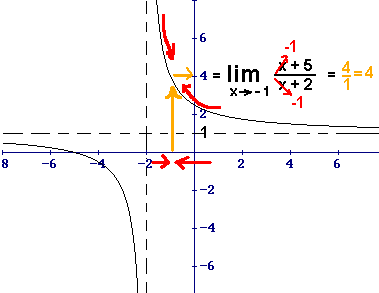A continuity is when the function is predictable, has no breaks, holes, or jumps, and can be drawn without lifting your pencil. A discontinuity is when the function DOES have holes, breaks, or jumps, and it isn't predictable. As well does a discontinuity have two types of families:
The first type of family is the Removable Discontinuities- This family only has the Point Discontinuity, which is pretty much a graphed out line with a hole in it (it can also be a hole with a point above it).
Ex.
 |
| http://bfreshrize.files.wordpress.com/2012/01/unknown.jpeg?w=500 |
Ex.
 |
| http://image.tutorvista.com/content/feed/u364/discontin.GIF |
Ex.
 |
| http://webpages.charter.net/mwhitneyshhs/calculus/limits/limit-graph8.jpg |
Ex.
| http://www.math.brown.edu/utra/discontinuities%201.GIF |
A limit is the intended height of a function. The limit exists whenever you reach the same height from both the left and right (on a continuity). However it does not exist when you cannot reach the same height from both the left and right (on a discontinuity). The difference between the two is that a limit is the intended height while the value is the actual height of the function.
3- How do we evaluate limits numerically, graphically, and algebraically?
When evaluating limits numerically you just have to create a table to find the points closest to the value and vise versa to find the limit.
Ex.
 |
| http://media.showme.com/files/349881/pictures/thumbs/658760/last_thumb1359484583_200x150.jpg |
Ex.
 |
| http://www.mathnstuff.com/math/spoken/here/2class/420/c42d.gif |
Ex. (Substitution)
Ex. (Factoring)
Ex. (Rationalizing)


